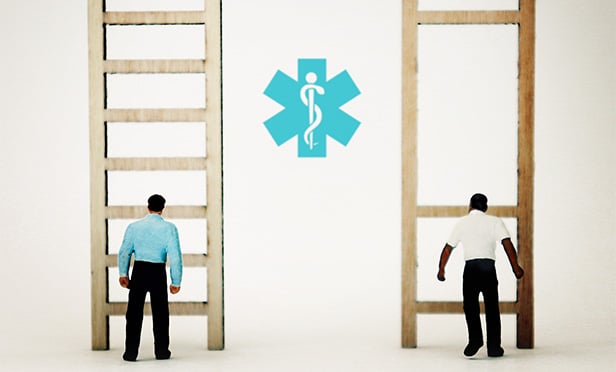
10. Low birth weight
An ongoing concern in public health is the relatively high rate of low birth weight in the U.S. Between 1990 and 2018, the percentage of infants with low birthweight increased 19%; the study found no improvement in the rates between 2017 and 2018. Health disparities seem to play a role here: low birth weight in infants is higher among African Americans, higher in infants with mothers who have less than a high school education, and in infants born to younger mothers.

Which factors have had the biggest impact on Americans' health? Check them out...

1. Multiple chronic conditions
One big driver of health care costs in the United States has been chronic conditions, and Americans often suffer from more than one chronic health care issue. In this year's report, researchers found that the percentage of adults suffering from three or more chronic conditions declined from 10.3% to 9.5% in 2019. The report noted that Americans suffering from multiple chronic conditions are at higher risk from serious diseases such as COVID-19.

2. Obesity
A longstanding health challenge for many Americans, obesity rates hit a new high in the past year, increasing 15% nationally from 2011 to 2019. Currently, obesity affects nearly 70.4 million American adults--a new record. "Obesity has increased among all subpopulation groups during this same time period, including gender, age, education, income as well as race and ethnicity," the report said.

3. Exercise
One positive finding of the report is that the number of adult Americans who exercise has increased. Between 2017 and 2019, exercise increased 13% nationally from 20.3% to 23.0%, the report found, an increase of nearly 4.9 million adults.
Advertisement

4. Flu vaccination
There has also been a significant increase in the number of Americans receiving a flu vaccination: between 2018 and 2019, flu vaccination coverage increased 25% nationally from 35.0% to 43.7% of adults, the study said. "However, this remains far below Healthy People 2030's national target to have 70% of the population vaccinated," the report added.

5. Mental health
The report noted growing mental health issues, at a time of both health and economic stress for many Americans. Both the suicide rate and the number of Americans reporting frequent mental distress has been climbing in recent years. However, there was also a more hopeful sign: the nation added 72,000 mental health providers between 2019 and 2020. This represented a 9% increase in providers nationally, the report said.

6. High-speed internet
As it does every year, the study looked at social determinants of health and other economic factors that have an impact on Americans' health. One such area that saw improvement was the percentage of households with high-speed internet. The study noted that during the COVID-19 pandemic, that number became very important, as working and learning from home became a necessity for many Americans. In addition, there has been a sharp increase in health care being delivered remotely via online appointments. The Americas Health Rankings study noted the ongoing increase of households with high-speed internet: from 2013 to 2018 the percentage of those households grew from 77.7% to 88.3%.

7. Number of uninsured
One of the more troubling trends in recent years is the reversal in progress toward providing health insurance to all Americans. The report said that between 2010 and 2016, the uninsured rate in the U.S. decreased 45%. But that trend has been reversed, the study found: "Between 2016 and 2019, the percentage of the population that is uninsured increased 7% nationally from 8.6% to 9.2%, leaving 2.3 million more people uninsured. Between 2018 and 2019, the uninsured rate increased significantly in 10 states."

8. Disparities in health conditions and treatment
At every major measurement, the report also documented the ongoing problem of disparities in how Americans experience health care and healthy living. These disparities are not only racial, they are linked to income and education levels as well. For example, if your income is $25,000 annually or less, your chance of having multiple chronic health conditions is 4.3 times higher than if your annual income $75,000 or higher.
Advertisement

9. Drug deaths and premature death
The study found that between 2017 and 2018, premature death rates and drug deaths dropped for the first time since 2012. The researchers said that for that time period, the drug death rate declined 5% nationally. Premature deaths declined 1% during the same period.

10. Low birth weight
An ongoing concern in public health is the relatively high rate of low birth weight in the U.S. Between 1990 and 2018, the percentage of infants with low birthweight increased 19%; the study found no improvement in the rates between 2017 and 2018. Health disparities seem to play a role here: low birth weight in infants is higher among African Americans, higher in infants with mothers who have less than a high school education, and in infants born to younger mothers.

Which factors have had the biggest impact on Americans' health? Check them out...

1. Multiple chronic conditions
One big driver of health care costs in the United States has been chronic conditions, and Americans often suffer from more than one chronic health care issue. In this year's report, researchers found that the percentage of adults suffering from three or more chronic conditions declined from 10.3% to 9.5% in 2019. The report noted that Americans suffering from multiple chronic conditions are at higher risk from serious diseases such as COVID-19.

2. Obesity
A longstanding health challenge for many Americans, obesity rates hit a new high in the past year, increasing 15% nationally from 2011 to 2019. Currently, obesity affects nearly 70.4 million American adults--a new record. "Obesity has increased among all subpopulation groups during this same time period, including gender, age, education, income as well as race and ethnicity," the report said.

3. Exercise
One positive finding of the report is that the number of adult Americans who exercise has increased. Between 2017 and 2019, exercise increased 13% nationally from 20.3% to 23.0%, the report found, an increase of nearly 4.9 million adults.
Advertisement

4. Flu vaccination
There has also been a significant increase in the number of Americans receiving a flu vaccination: between 2018 and 2019, flu vaccination coverage increased 25% nationally from 35.0% to 43.7% of adults, the study said. "However, this remains far below Healthy People 2030's national target to have 70% of the population vaccinated," the report added.

5. Mental health
The report noted growing mental health issues, at a time of both health and economic stress for many Americans. Both the suicide rate and the number of Americans reporting frequent mental distress has been climbing in recent years. However, there was also a more hopeful sign: the nation added 72,000 mental health providers between 2019 and 2020. This represented a 9% increase in providers nationally, the report said.

6. High-speed internet
As it does every year, the study looked at social determinants of health and other economic factors that have an impact on Americans' health. One such area that saw improvement was the percentage of households with high-speed internet. The study noted that during the COVID-19 pandemic, that number became very important, as working and learning from home became a necessity for many Americans. In addition, there has been a sharp increase in health care being delivered remotely via online appointments. The Americas Health Rankings study noted the ongoing increase of households with high-speed internet: from 2013 to 2018 the percentage of those households grew from 77.7% to 88.3%.

7. Number of uninsured
One of the more troubling trends in recent years is the reversal in progress toward providing health insurance to all Americans. The report said that between 2010 and 2016, the uninsured rate in the U.S. decreased 45%. But that trend has been reversed, the study found: "Between 2016 and 2019, the percentage of the population that is uninsured increased 7% nationally from 8.6% to 9.2%, leaving 2.3 million more people uninsured. Between 2018 and 2019, the uninsured rate increased significantly in 10 states."

8. Disparities in health conditions and treatment
At every major measurement, the report also documented the ongoing problem of disparities in how Americans experience health care and healthy living. These disparities are not only racial, they are linked to income and education levels as well. For example, if your income is $25,000 annually or less, your chance of having multiple chronic health conditions is 4.3 times higher than if your annual income $75,000 or higher.
Advertisement

9. Drug deaths and premature death
The study found that between 2017 and 2018, premature death rates and drug deaths dropped for the first time since 2012. The researchers said that for that time period, the drug death rate declined 5% nationally. Premature deaths declined 1% during the same period.

10. Low birth weight
An ongoing concern in public health is the relatively high rate of low birth weight in the U.S. Between 1990 and 2018, the percentage of infants with low birthweight increased 19%; the study found no improvement in the rates between 2017 and 2018. Health disparities seem to play a role here: low birth weight in infants is higher among African Americans, higher in infants with mothers who have less than a high school education, and in infants born to younger mothers.
© Touchpoint Markets, All Rights Reserved. Request academic re-use from www.copyright.com. All other uses, submit a request to [email protected]. For more inforrmation visit Asset & Logo Licensing.






